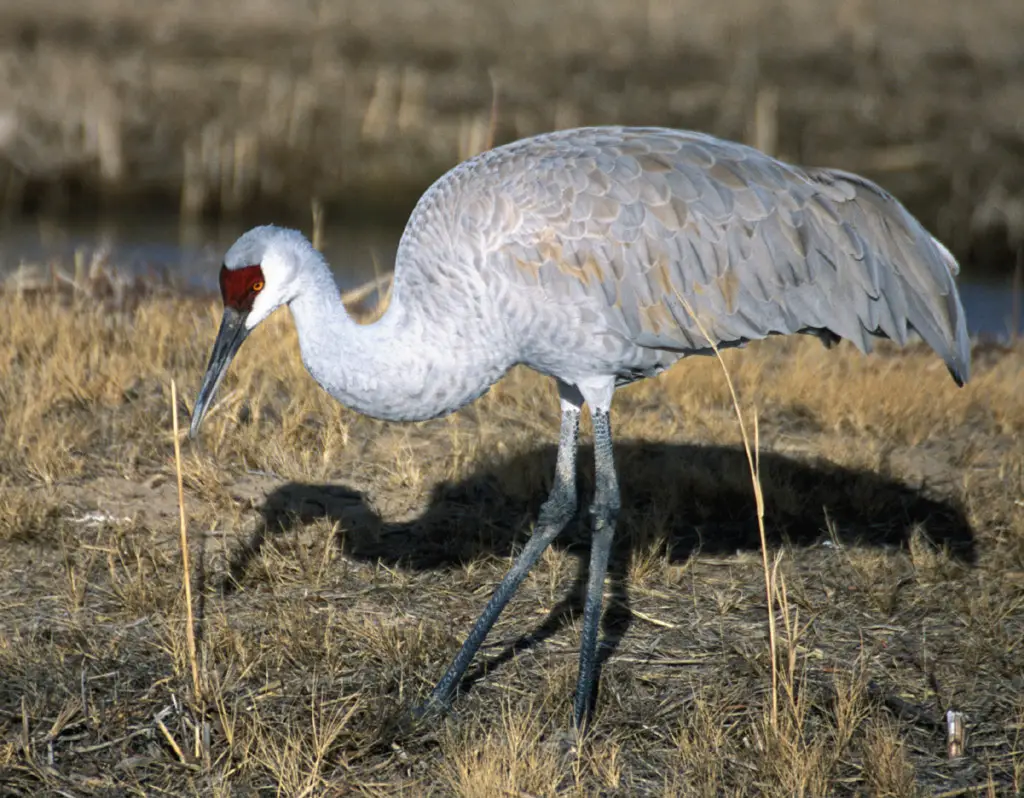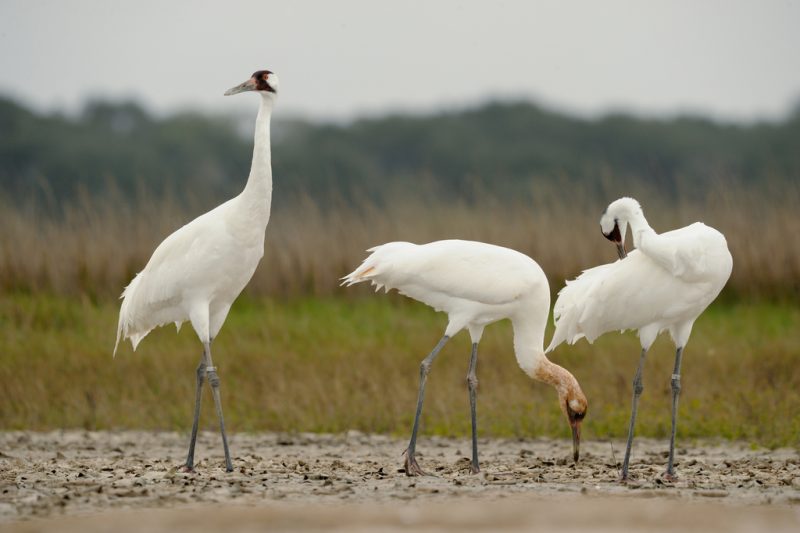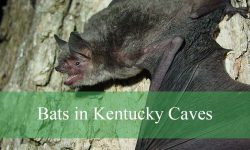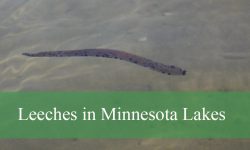Cranes in Wisconsin are among the most captivating and iconic birds that grace the state’s vast wetlands and open landscapes. Known for their impressive size, elegant movements, and distinctive calls, these birds have long fascinated birdwatchers and nature enthusiasts alike. Wisconsin plays a vital role in the life cycle of cranes, serving as a key stopover and breeding ground during their seasonal migrations.
Two primary species of cranes can be found in Wisconsin: the Sandhill Crane and the Whooping Crane. Each species brings its unique charm and characteristics to the state’s rich biodiversity. Understanding how to identify these cranes and knowing where and when to see them can greatly enhance any birdwatching experience. Cranes in Wisconsin are a true testament to the state’s commitment to wildlife conservation and habitat preservation.
Exploring the world of cranes in Wisconsin reveals some of the most spectacular wildlife viewing opportunities in North America. Large gatherings of Sandhill Cranes performing their elaborate courtship dances and rare sightings of the endangered Whooping Crane create unforgettable moments for birdwatchers and nature lovers across the state.
Common Cranes Found in Wisconsin
Sandhill Crane (Grus canadensis)

The Sandhill Crane is a large and elegant bird widely recognized for its graceful stature and distinctive calls. Adult Sandhill Cranes typically measure between 3 to 4 feet tall, with a wingspan ranging from 5.5 to 7 feet, making them one of the largest flying birds in North America. Their overall plumage is predominantly gray, sometimes with a rusty tint due to iron-rich mud in their habitat. A striking feature is the bright red patch on their forehead, which contrasts vividly against their pale gray head and neck. Their long legs and neck give them a stately profile, and their slow, deliberate movements add to their iconic presence in wetlands and open fields.
In Wisconsin, Sandhill Cranes are mostly found during migration and breeding seasons. They favor wetland environments such as marshes, wet meadows, and shallow freshwater bodies where they can forage and nest. Their diet is omnivorous and highly varied, including seeds, grains, insects, small amphibians, and aquatic plants. These birds are known for their elaborate mating dances, which involve jumping, bowing, and wing-flapping, often performed by pairs to strengthen their bond. Their loud, trumpeting calls can carry for miles, serving both as a means of communication within flocks and as territorial signals.
Behaviorally, Sandhill Cranes are social birds that often gather in large flocks during migration, especially in Wisconsin’s key stopover sites such as Necedah National Wildlife Refuge and Crex Meadows Wildlife Area. Here, thousands of cranes rest and feed, taking advantage of the rich resources before continuing their journey north or south. These cranes typically migrate in V-shaped formations, flying high and covering great distances between breeding grounds in northern Wisconsin and southern Canada to wintering areas in the southern United States and Mexico. Sandhill Cranes are highly adaptable but rely heavily on intact wetland habitats for breeding success.
The presence of Sandhill Cranes in Wisconsin reflects both their preference for expansive wetlands and the conservation efforts that maintain these habitats. Wisconsin hosts one of the largest populations of the Eastern Sandhill Crane, with tens of thousands passing through or nesting in the state annually. Their preferred habitats include marshes like Horicon Marsh and the vast wetland complex at Crex Meadows. These areas provide abundant food sources and safe nesting grounds. Conservation initiatives in Wisconsin continue to monitor and protect these iconic birds to ensure their populations remain stable amid threats such as habitat loss and human disturbance.
Whooping Crane (Grus americana)

The Whooping Crane is one of North America’s most magnificent and rare birds, famed for its striking appearance and dramatic recovery from near extinction. Adult Whooping Cranes stand even taller than Sandhill Cranes, reaching heights up to 5 feet with a wingspan that can exceed 7 feet. Their plumage is primarily brilliant white, creating a stark contrast to their black wing tips which are visible during flight. They have a red crown and a long, pointed black bill. The legs and feet are dark gray to black, and their imposing size and elegant posture make them unmistakable among other crane species.
In Wisconsin, Whooping Cranes are seen mostly during migration or as part of managed reintroduction efforts. These cranes prefer large wetlands, shallow marshes, and open grasslands near water, where they can forage and nest safely. Their diet consists mainly of aquatic plants, insects, small fish, frogs, and occasionally small mammals. Known for their solemn, loud “whooping” calls, these birds communicate over long distances to maintain contact with mates and family groups. Their behavior includes slow, purposeful movements and an impressive courtship display involving synchronized dancing and vocalizations that strengthen pair bonds.
The Whooping Crane population in Wisconsin is part of the Eastern Migratory Population, a carefully monitored group that migrates between breeding grounds in Canada and wintering areas in Florida. Wisconsin provides critical stopover habitat, particularly in areas like Horicon Marsh and Faville Grove Sanctuary, where these cranes rest and refuel during their long journey. Because the species remains endangered, conservationists actively protect these habitats and track individuals using GPS telemetry to study migration patterns and survival rates.
Despite its recovery, the Whooping Crane faces ongoing threats from habitat loss, human disturbance, and collisions with power lines. In Wisconsin, efforts focus on maintaining and restoring wetland habitats, minimizing disturbances during migration and breeding, and educating the public about the importance of protecting this majestic species. The success of the Whooping Crane’s comeback in Wisconsin serves as a testament to conservation dedication and highlights the state’s vital role in supporting the survival of one of the world’s rarest birds.
Best Time and Places to See Cranes in Wisconsin
The best time to observe cranes in Wisconsin is during their spring and fall migration periods, which typically occur from late March through early May and again from late September through early November. During these times, thousands of Sandhill Cranes and a smaller number of Whooping Cranes pass through the state as they travel between their breeding grounds in northern Wisconsin and Canada, and their wintering areas in the southern United States. Wisconsin’s wetlands provide crucial resting and feeding stops that support these long journeys. The peak migration usually coincides with warming temperatures and the thawing of marshes and fields, offering optimal conditions for the cranes to gather and refuel.
Some of the best locations to see cranes in Wisconsin include Necedah National Wildlife Refuge, Crex Meadows Wildlife Area, Horicon Marsh, and Faville Grove Sanctuary. Necedah National Wildlife Refuge, located in central Wisconsin, is a well-known breeding and stopover site for Sandhill Cranes, offering visitors excellent opportunities to witness large flocks feeding and performing their characteristic mating dances. Crex Meadows, in the northwest part of the state, is another prime area, with vast wetlands attracting significant numbers of Sandhill Cranes during migration. Horicon Marsh, one of the largest freshwater marshes in the United States, provides critical habitat for both Sandhill and Whooping Cranes, especially during their migration stopovers. Faville Grove Sanctuary is recognized for frequent sightings of Whooping Cranes, where conservation efforts have established a safe haven for this endangered species during their travels.
For the best viewing experience, early mornings and late afternoons are ideal times, as cranes are often most active during these cooler parts of the day. Visitors are encouraged to use binoculars or spotting scopes and to remain quiet and respectful of the birds’ natural behavior to avoid disturbance. Local wildlife agencies and visitor centers often provide updates on crane sightings and migration timing, helping enthusiasts plan their visits. Overall, Wisconsin offers some of the most spectacular crane-watching opportunities in North America, making it a prime destination for birdwatchers and nature lovers alike.






